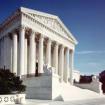Activity 2: Skills and Best Practices
Sequence of Events Chart
"Graphic organizers are perhaps the most common way to help students generate nonlinguistic representations."
--Marzano, Robert J., Pickering, Debra J., Pollock, Jane E. (2001). Classroom Instruction That Works. McREL/ASCD. 75. Northwest Regional Educational Laboratory, Pathways to School Improvement: www.ncrel.org.
A Sequence of Events chart is a graphic organizer used to describe the stages of something (the life cycle of a primate); the steps in a linear procedure (how to neutralize an acid); a sequence of events (how feudalism led to the formation of nation states); or the goals, actions, and outcomes of a historical figure or character in a novel (the rise and fall of Napoleon). Key frame questions: What is the object, procedure, or initiating event? What are the stages or steps? How do they lead to one another? What is the final outcome?
Cornell Notes: Two-Column Note Taking
The Cornell system for taking notes is designed to save time but yet be highly efficient. There is no rewriting or retyping of your notes. It is a "DO IT RIGHT IN THE FIRST PLACE" system. It consists of the following stages:- Preparation
- During the Lecture
- After the Lecture
Description:
This technique requires the student to draw a line lengthwise down the middle of a piece of note paper. (Some loose-leaf notebook paper comes already prepared in this format.) As the student reads or listens, major headings or concepts are recorded in the space to the left, supporting details in the space to the right. Only one side of the paper is used. When it comes time to study, the paper is folded down the center line so that either the main ideas or the details are visible, but not both at once. In studying for an essay exam, the student tries to recall the details while looking at the main ideas; in studying for a multiple choice test, the student tries to recall main ideas while looking only at the details. In this form, the studentsí notes are a mnemonic device (a tool for memory) that is much more efficient than rereading or trying to recall strictly from memory.
Procedure:
It will be best to model the 2-column procedure with students. Assign a short selection to be read, one with an organization that transparently lends itself to easy note taking (that is, has clearly stated main ideas and supporting details.) Using an overhead transparency projector, construct your own notes on the selection and share them with your students. Discuss the decisions you made, thinking aloud about how you did what you did in constructing the notes. A variation on this procedure is to make notes on a selection in a group setting, again using a transparency. This allows the students to see an outline take shape as they participate in its construction. Activities such as this can be repeated numerous times with the double benefit of teaching something about note taking and providing a springboard for discussion of reading assignments.

 Module Menu
Module Menu Printable View
Printable View